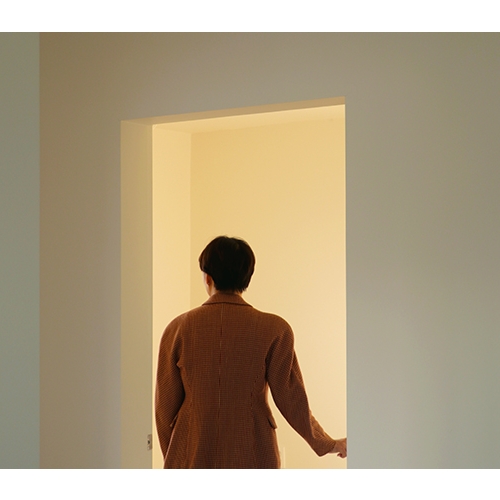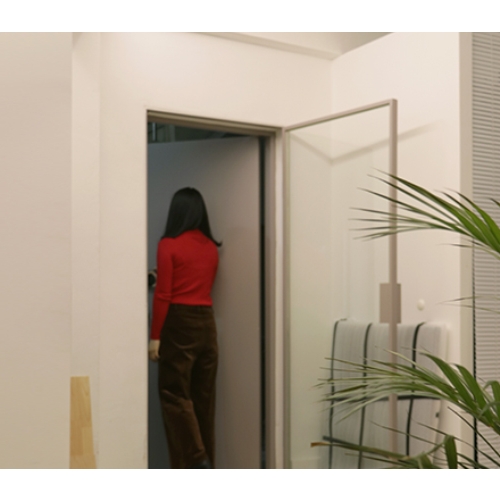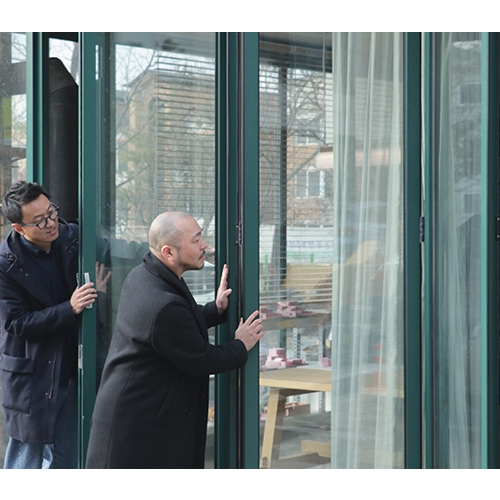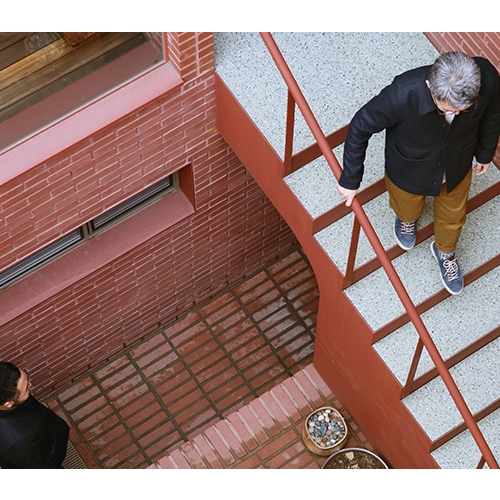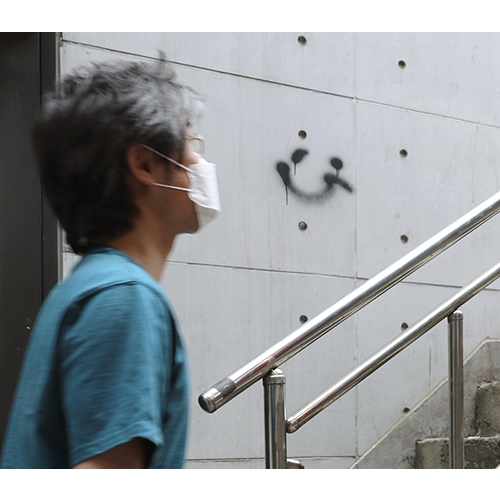ʻI am an Architectʼ was planned to meet young architects who seek their own architecture in a variety of materials and methods. What do they like, explore, and worry about? SPACE is going to discover individual characteristics of them rather than group them into a single category. The relay interview continues when the architect who participated in the conversation calls another architect in the next turn.
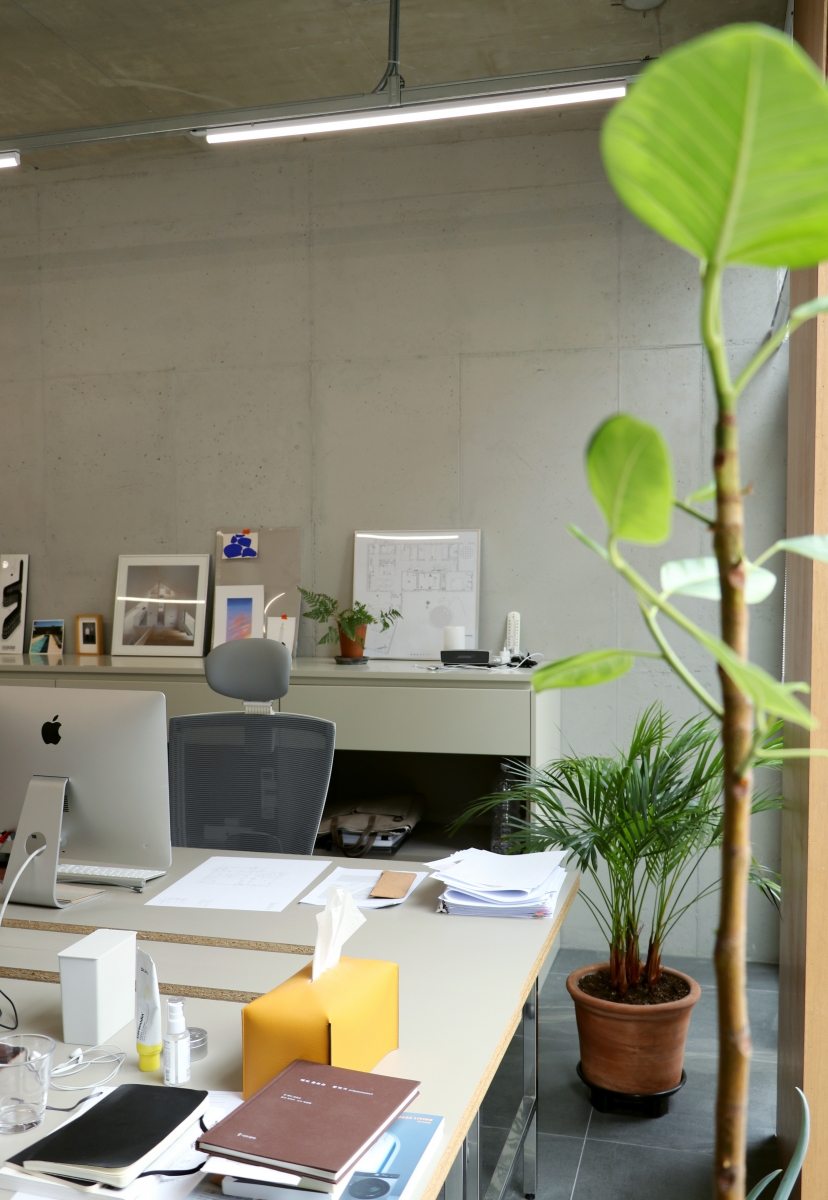
interview Lee Sewoong, Choi Yeonwoong co-principals, apparat-c ¡¿ Kim Yeram
We¡¯ve Known Each Other for Quite a Long Time
Kim Yeram (Kim): I heard that apparat-c means a mechanical device in German. Its meaning is as unique as it sounds.
Lee Sewoong (Lee): I hoped that when one heard the name of the office, a sense of its spirit would be conveyed in sound rather than language, so that its meaning would not strike immediately nor would it fix the identity of the office. That¡¯s why I decided upon a name in German, so that you would not immediately recognise its meaning. Somewhat subjective and adventitious, I was heavily influenced by the philosopher Martin Heidegger when contemplating the name. When I came across his expression of art as a tool capable of revealing the hidden order of the world, I felt as if I had received a blow to the head.
Choi Yeonwoong (Choi): It will take some time before it is fully understood because it is a difficult name to be stamped on the memory, but I believe we will be judged first through our work.
Kim: Lee opened the office in 2013, after which Choi joined. I would like to know how the two of you, after studying together in Germany, made the decision to run a joint practice?
Lee: We not only went to college together but also did our military service together. While we spoke about many different things, we also explored the idea of running an office together, and we went to the same country, even the same university, to study abroad. As soon as living overseas became a little boring, I returned to Korea and opened an office right away, and struggled on my own for a year and a half. So I asked Choi to return to Korea as quickly as possible! (laugh)
Kim: Did you return to Korea immediately after receiving the call?
Choi: I was working in an architectural office to get the German architect license, so I was not able to join him right away. I think I came to Korea about six months after receiving the call from Lee.
Hongjecheon Stream Is Nearby
Kim: Where was your first office located?
Lee: In Yeonnam-dong. Luckily, I designed a multi-family house for an acquaintance, and then I moved into the first floor of the building.
Kim: That¡¯s the White Cone (2014)?
Lee: That¡¯s right. Until 2018, I stayed in a space that was less than 20§³.
Kim: Your current office is in Hongeun-dong. I wonder why you decided to move here?
Lee: In contrast to when I opened the office in Yeonnam-dong, the rent became too expensive as the area became very popular and crowded with new residents. I needed a larger workspace anyway, so I began to look for a few places to house the studio, and I liked Hongeun-dong the most.
Kim: What did you like the most?
Choi: The area still had a cosy atmosphere. I often walk around the alleyways near my office, and those hours greatly inspire me as an architect who tends to build houses.
Lee: I have a lot of a conversations with my wife while walking around Hongjecheon stream. I would not have done much exercise at all if it wasn¡¯t here.
Kim: Since Lee lives on the third floor of the office building, I assume you do almost every activity together in Hongeun-dong.
Lee: The commuting time has been greatly reduced because I can get to work by only going down the stairs, but I feel like I am developing a bad back. There are many days when I barely walk 500 steps per day!
Kim: I still think there are many advantages to living in a building that you have designed. What did you pay most attention to when designing your office?
Choi: Since the given area is not very large, we tried to secure as high a floor height as possible to improve the level of comfort in the space. In general, I used a quiet, toned-down colour to reduce any unpleasantness.
Lee: When you open the idea board on the wall, there is a hidden bookshelf. When anyone visits the office, we open it and give him a glimpse.
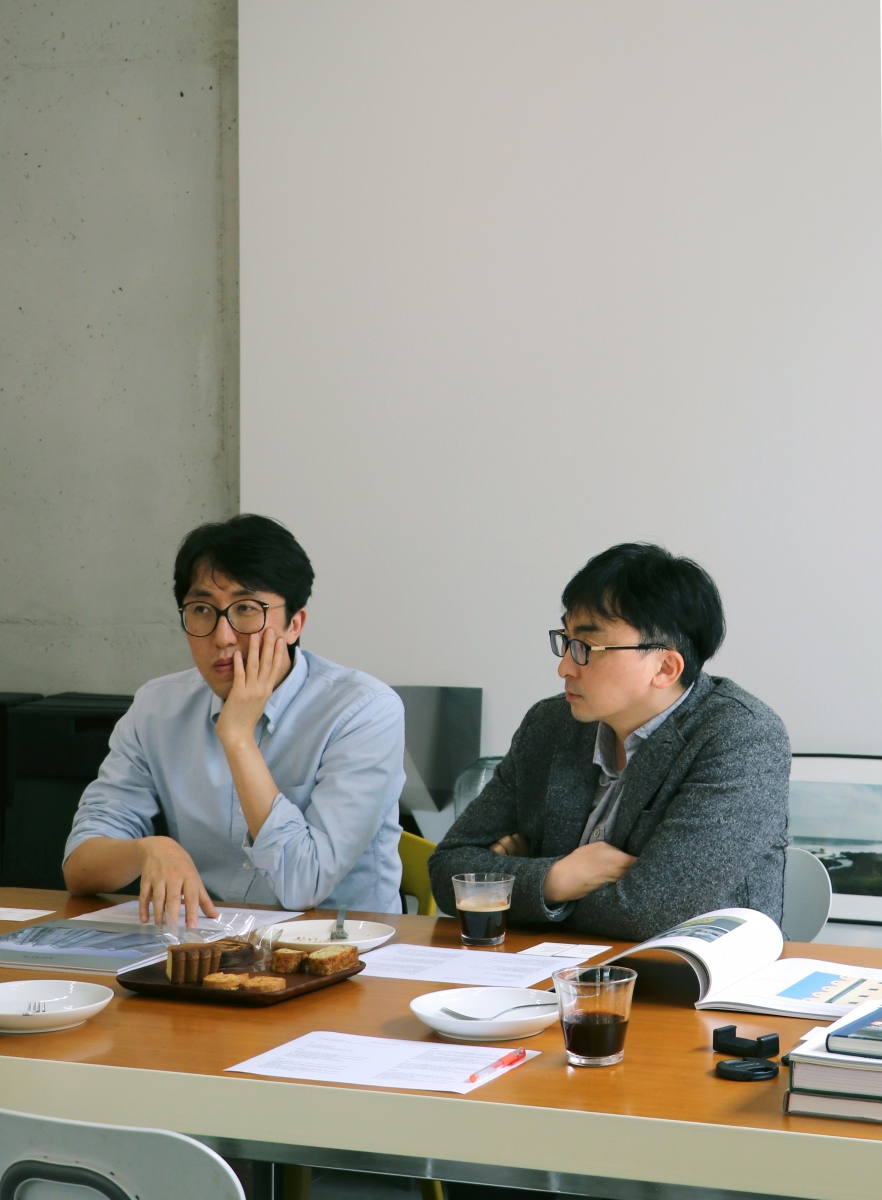
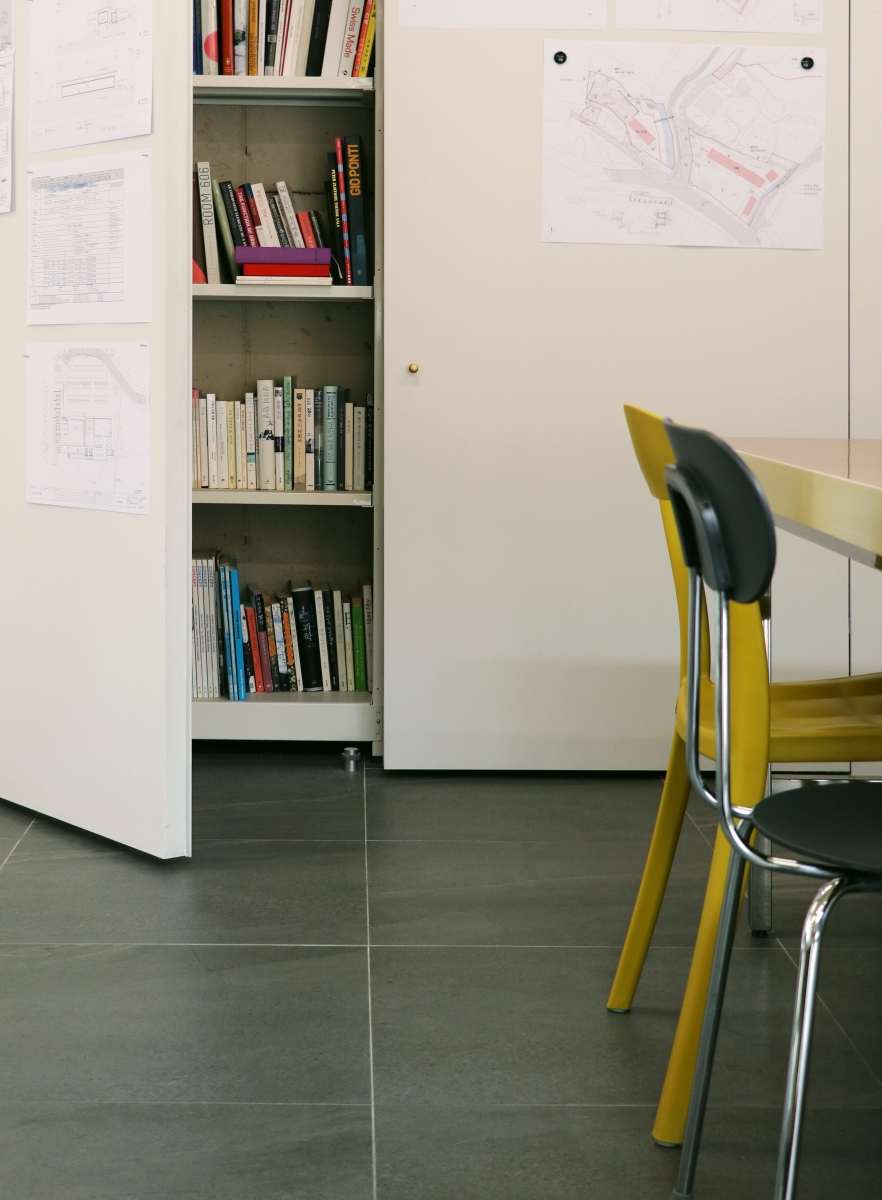
Taking a Deep Breath
Kim: There are plants everywhere.
Lee: I started to keep them as my mother-in-law brought in one after another, and it is quite fun. Thanks to them, I am less stressed. Obviously, as I get older, I¡¯ve developed a stronger connection to nature! (laugh)
Kim: An action that you perform regularly can give you a sense of stability. Do you have any other routines or leisure activities besides growing plants?
Lee: When I was studying abroad, I made all kinds of different dishes to survive. But after I returned to Korea, I rarely cooked for myself. So I didn¡¯t eat at home for quite a long time. Then, after I got married, I started cooking again. I realised that I can get tired of choosing a different delivery menu! (laugh) And, in fact, you can take a small and simple pleasure from preparing and cooking various ingredients of different textures.
Choi: I climb the mountain behind my house either before or after work. It feels great when I breathe in the air while hiking. This is a life that you cannot imagine in Germany, where there are many rugged mountains.
Kim: Are there any concerns that do not go away even after repeating those routines?
Lee: Lately, I¡¯ve been thinking a lot about what I can do to continue running the office. I don¡¯t want to increase the size of the office, but I¡¯m thinking about what kind of projects I can undertake and how many people I need to take them on, in order to steadily receive the commissions. It¡¯s like taking a breather. Luckily, we haven¡¯t signed many contracts in the past two years, which gave me quite a lot of time to think about it.
Kim: Indeed?
Lee: Both funny and sad, but since I was given an unplanned stretch of time, I get to think about the issues in less condensed way.
It¡¯s Like Designing a Sense of Intimacy
Kim: I heard that the design interests of apparat-c has shifted from form to function.
Lee: When we opened our office, more of our focus was on how best to design the visible form. Since that point, however, I got to think more deeply about combining functions.
Choi: It is like intense contemplation of whether to begin the design at the exterior of the building or the interior programmes. There are more cases where we look deeper at the space in which we live, and begin designing with the activities that take place on the inside.
Kim: By observing the clearly designed interior circulation, I can imagine the struggle you must have experienced to devise this scheme.
Lee: Urban Retreat (2017) and Satin (2018) are examples in which we experienced such struggles. Both projects have a dead end and a bedroom placed at that end. The bedroom is the most intimate space in the house, a private area in the city, so I placed it at the end of a long corridor to represent the movement of the homedweller person who returns home to enter deep into their private space.
Kim: You must go through an entrance to get inside. I remember you said that the entrance is a space in which a kind of ritual takes place.
Lee: The entrance is a space that users frequent at least once or twice during the day. Since it is an extremely important transitional space in terms of circulation, I performed several experiments on the extent to which it is open or closed, but it seemed like different conclusions came out each time. Just as an idea only exists by virtue of its form, each building seems to have its own entrance.
Kim: Can you give an example?
Choi: You know that feeling when you would like to secure your own space by blocking the outside, but you hesitate for fear of looking selfish? Satin was the project in which we tried to limn this interface. The building mass is as solid as a fortress, and it is almost entirely enclosed with no window at the entrance, but as you ascend the exterior stairs there is a yard to which you can invite neighbours.
Kim: It seems like the yard has become a space that is as important as the entrance to the architecture of apparat-c.
Choi: People usually don¡¯t have a single clear idea. Looking back, I used to treat the yard as a contradictory subject, like a human being. It¡¯s not like that I want a yard reflective of a nature that more primitive, not an unmanaged wild landscape.
Lee: I think it is too old-fashioned that a space like a yard that can embrace various sceneries to only deal with a single experience. For instance, Chef Oh Sedeuk serves Calçotada, which are the blackened green onions that are served as finger food before the steak. The process of enjoying the appetizer while removing the burnt parts enriches the experience of the meal. We think such an element is required in the experience of enjoying our home, so we are very active in designing not only the entrance, but also the yard, balcony, and terrace.
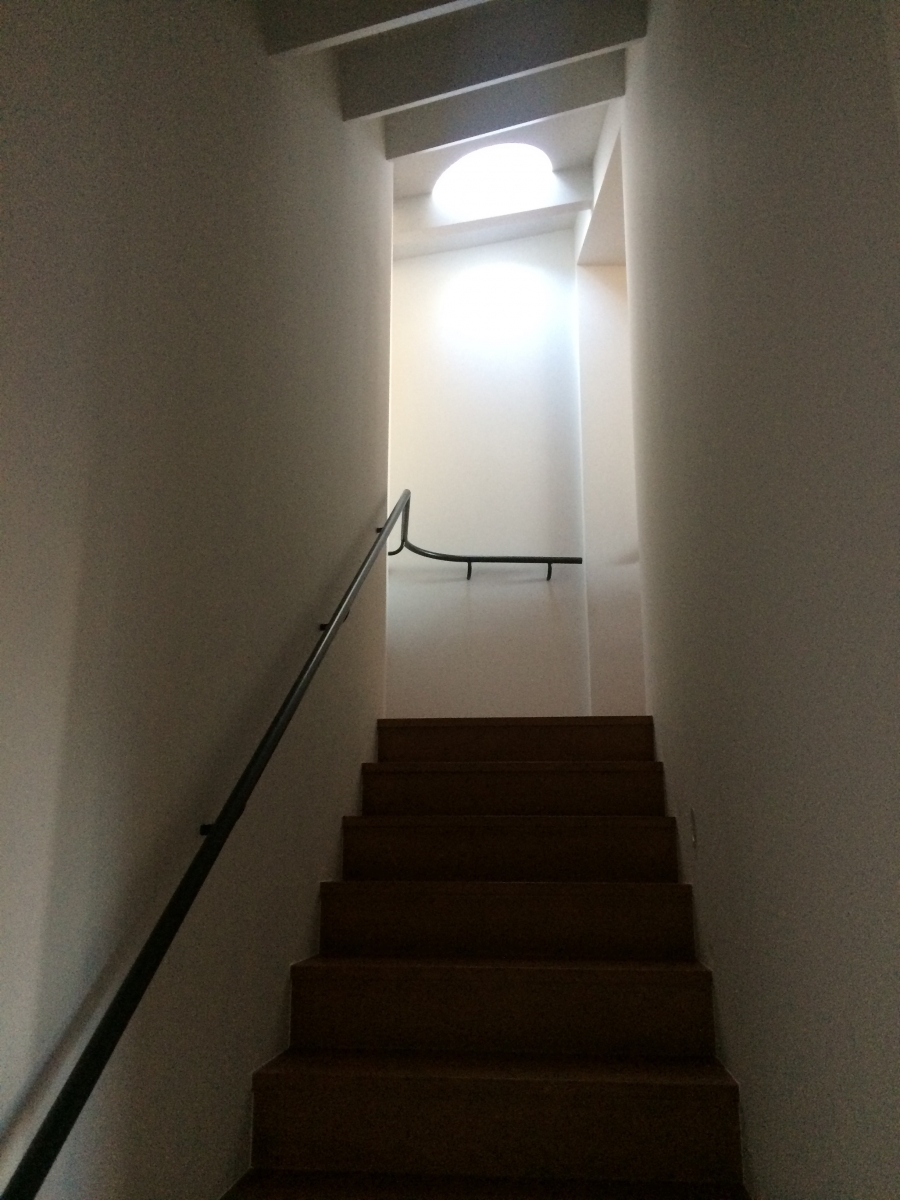
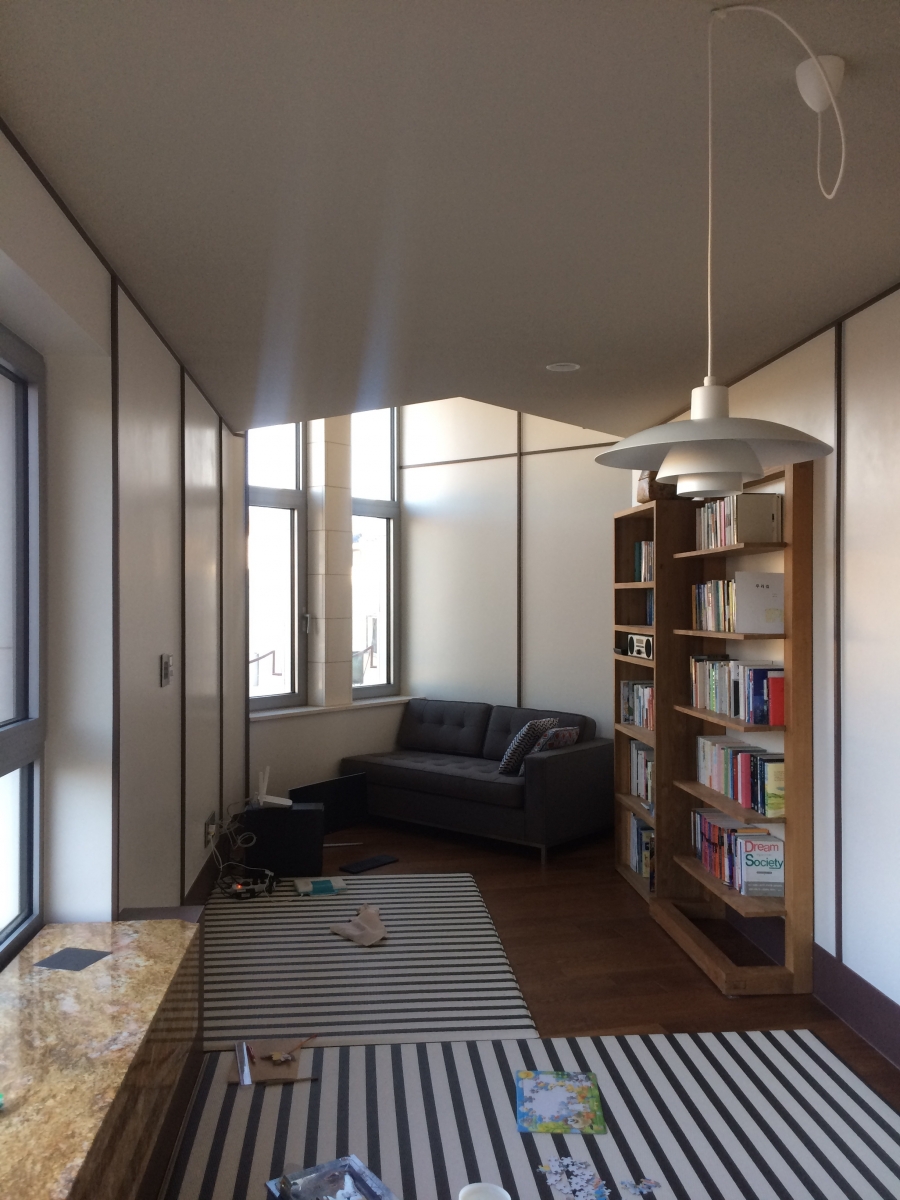
Satin (2018) / Image courtesy of apparat-c
We Want to See Things from Different Angles
Kim: I happened to see a portfolio that you made in the past on Facebook. You quoted the installation artist Gerhard Richter when talking about the importance of looking at one subject from multiple angles.
Lee: As time goes by, I tend to become less interested in work that can be clearly read as a single linear idea. Even if it is not our project, I tend to simply skip work that does not require deeper interpretation. Rather, I¡¯m more interested in work that doesn¡¯t express any one clear character on the outside. I enjoy the feeling that I could somehow find a clue to a design.
Choi: I wonder if that kind of pleasing moment is actually a reflection of something very carefully and intelligently designed. It seems like a story that is available to people who have sufficient knowledge of the field and are able to solve more complex design issues as a result.
Kim: Wouldn¡¯t the habit of constantly reorganising your thoughts make you both delicate architects?
Lee: I hope the results are delicate, but the process is a bit more irresolute. Others may see this as if we are going back and forth, but I would like to draw a clear conclusion after a long period of rumination, rather than making quick decisions. I also don¡¯t want to be a prolific architect. I did not get consent from Choi, but isn¡¯t it ok if I can earn about 3 million KRW per month while working on about two projects?
Choi: This is something that I do not yet agree with. (laugh)
Kim: I know that you are currently working on more than two projects.
Lee: We have to finish the design of the Oceano Resort Hotel in Haenam in collaboration with todo architects by the end of this year. The construction of a tent-like café in Ulsan is scheduled to be completed soon, and we are planning a few more annexes around it. The remodeling project in Gugi-dong, Seoul, will also be completed within 2 – 3 months.
Kim: It seems like there is quite a lot of work to do.
Lee: Besides being prolific, we must also survive. (laugh)
Lee Sewoong and Choi Yeonwoong, our interviewees, want to be shared some stories from Kim Jinhyu, Nam Hojin (co-principals, KimNam Architects) in July issue.






